#Frank Vosper
Text

Bad movie I have The Man Who Knew Too Much 1934
#The Man Who Knew Too Much#Leslie Banks#Edna Best#Peter Lorre#Frank Vosper#Hugh Wakefield#Nova Pilbeam#Pierre Fresnay#Cicely Oates#D.A. Clarke-Smith#George Curzon#Frank Atkinson#Betty Baskcomb#Cot D'Ordan#Tony De Lungo#Clare Greet#Pat Hagan#Joan Harrison#Edward A. Hill-Mitchelson#Alfred Hitchcock#James Knight#Arnold Lucy#Andreas Malandrinos
2 notes
·
View notes
Text

First time posting my art. A few sketches of Peter Lorre as Abbott in The Man who knew too much.
I’m not a master artist, so constructive criticism is very welcome! :)
3 notes
·
View notes
Text
youtube
Watch the American Climate Leadership Awards 2024 now: https://youtu.be/bWiW4Rp8vF0?feature=shared
The American Climate Leadership Awards 2024 broadcast recording is now available on ecoAmerica's YouTube channel for viewers to be inspired by active climate leaders. Watch to find out which finalist received the $50,000 grand prize! Hosted by Vanessa Hauc and featuring Bill McKibben and Katharine Hayhoe!
#ACLA24#ACLA24Leaders#youtube#youtube video#climate leaders#climate solutions#climate action#climate and environment#climate#climate change#climate and health#climate blog#climate justice#climate news#weather and climate#environmental news#environment#environmental awareness#environment and health#environmental#environmental issues#environmental justice#environment protection#environmental health#Youtube
15K notes
·
View notes
Text
Stranger Flings
LOVE FROM A STRANGER
Crescent Theatre, Birmingham, Saturday 13th April 2024
Written by Frank Vosper in 1936, based on a short story from 1924 by Agatha Christie, this is not so much a whodunit as a who’s-gonna-get-it, as the identity of the murderer is hinted at almost from the start. It’s the story of Cecily who, having won much more than a lucky dip on the lottery, finally believes she can…
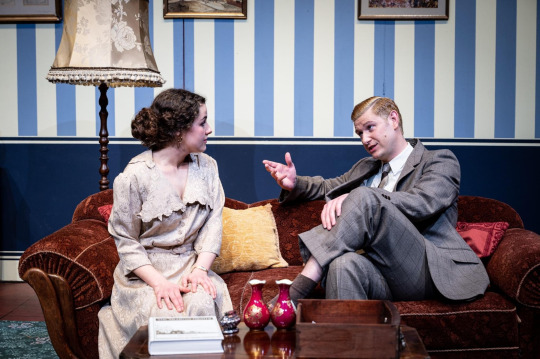
View On WordPress
#Agatha Christie#Alex Morey-Wiseman#Alex Morley-Wiseman#Alexande rPendleton#Birmingham#Brian Wilson#Frank Vosper#Helena Lima#Julie Lloyd#Kaitlyn Elward#Love From A Stranger#Michael Barry#review#Rod Natkiel#Savannah Gallo#The Crescent Theatre
0 notes
Photo
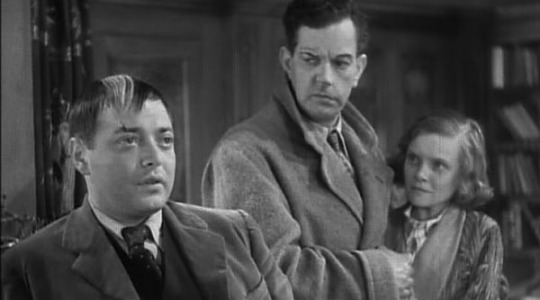
Peter Lorre, Leslie Banks, and Nova Pilbeam in The Man Who Knew Too Much (Alfred Hitchcock, 1934)
Cast: Leslie Banks, Edna Best, Peter Lorre, Frank Vosper, Hugh Wakefield, Nova Pilbeam, Pierre Fresnay, Cicely Oates, D.A. Clarke-Smith, George Curzon. Screenplay: Charles Bennett, D.B. Wyndham-Lewis, Edwin Greenwood, A.R. Rawlinson. Cinematography: Curt Courant. Art direction: Alfred Junge. Film editing: Hugh Stewart. Music: Arthur Benjamin.
The first version of The Man Who Knew Too Much was Alfred Hitchcock’s breakthrough film, a critical and popular success that also established Peter Lorre as an international star. It was Lorre’s first English-language film. (He is said to have learned the role phonetically.) Lorre had made his reputation with M (Fritz Lang, 1931) in Germany, which he left in 1933 he had left because of the rise of the Nazis. His performance is perhaps the most memorable thing about The Man Who Knew Too Much, which sometimes feels slack and disjointed, as if Hitchcock hadn’t yet mastered the technique of seeing the film as a whole. Comparing it to his 1956 remake, Hitchcock told François Truffaut, “The first version is the work of a talented amateur and the second was made by a professional.” Lorre plays Abbott, the mastermind of a group of radicals who are plotting the assassination of the leader of a European country – the politics are the film’s MacGuffin, a vague motive that spurs the action. When Bob Lawrence (Leslie Banks) accidentally learns of the plot, his daughter (Nova Pilbeam) is kidnapped to prevent him from going to the police, but his wife (Edna Best) manages to foil the assassination by screaming when she spots the killer at the point in a concert at the Royal Albert Hall when a cymbal crash is supposed to cover the sound of the gun. Even so, there’s a lot of action left as Lawrence frantically tries to rescue his daughter while the police shoot it out with the bad guys. Banks and Best are a rather pallid couple – he’s given to “stiff upper lip, old girl” exhortations, and although she’s a champion sharpshooter who fires the shot that kills the assassin, she has little to do the rest of the time but dither and emit that crucial scream – so it’s no wonder that Lorre steals the film.
1 note
·
View note
Text
the part in Hitchcock's 1934 version of The Man Who Knew Too Much where Nova Pilbeam is like, "i just don't like him. he has too many teeth, and... too much brilliantine!" and then the next frame is a close-up of the back of Frank Vosper's shiny head. gotta be one of the best visual gags of all time.
1 note
·
View note
Photo
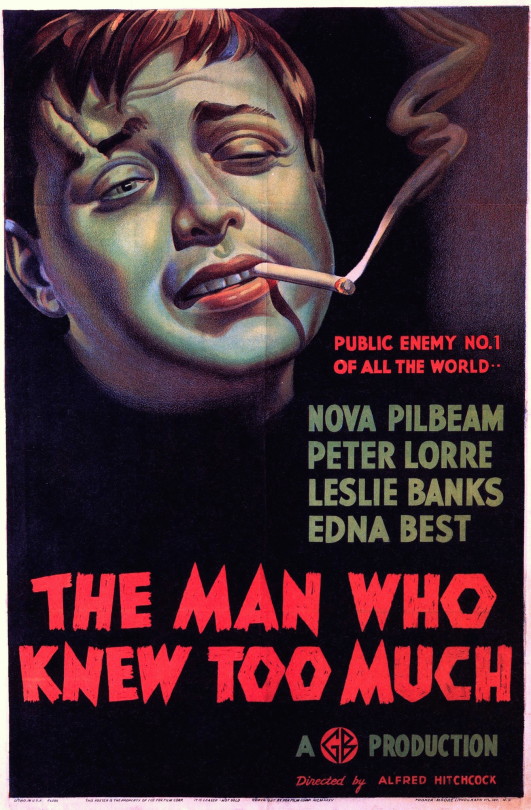
#the man who knew too much#leslie banks#edna best#peter lorre#nova pilbeam#frank vosper#alfred hitchcock#1934
3 notes
·
View notes
Text
youtube
Watch the 2024 American Climate Leadership Awards for High School Students now: https://youtu.be/5C-bb9PoRLc
The recording is now available on ecoAmerica's YouTube channel for viewers to be inspired by student climate leaders! Join Aishah-Nyeta Brown & Jerome Foster II and be inspired by student climate leaders as we recognize the High School Student finalists. Watch now to find out which student received the $25,000 grand prize and top recognition!
#ACLA24#ACLA24HighSchoolStudents#youtube#youtube video#climate leaders#climate solutions#climate action#climate and environment#climate#climate change#climate and health#climate blog#climate justice#climate news#weather and climate#environmental news#environment#environmental awareness#environment and health#environmental#environmental issues#environmental education#environmental justice#environmental protection#environmental health#high school students#high school#youth#youth of america#school
16K notes
·
View notes
Photo



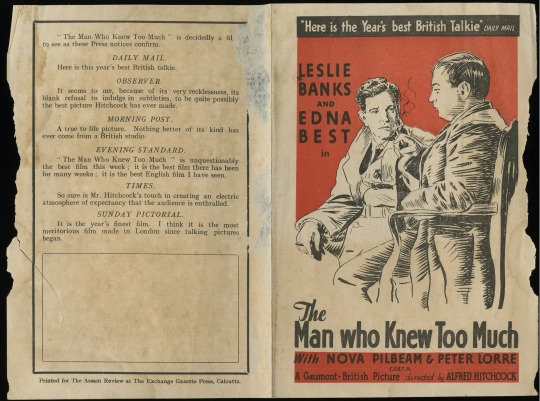


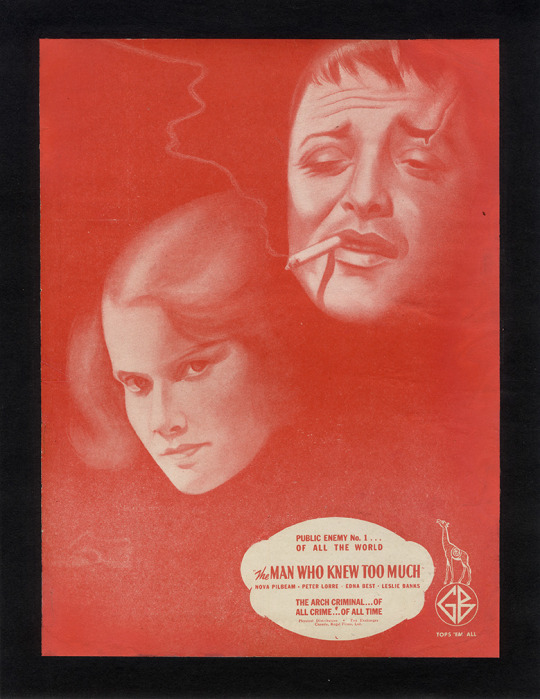
The Man Who Knew Too Much (1934) Alfred Hitchcock
November 28th 2020
#the man who knew too much#1934#alfred hitchcock#leslie banks#peter lorre#edna best#nova pilbeam#hugh wakefield#frank vosper#cicely oates#pierre fresnay
9 notes
·
View notes
Text
12.30.19

#watched#film#letterboxd#the man who knew too much#alfred hitchcock#peter lorre#leslie banks#edna best#frank vosper#hugh wakefield
2 notes
·
View notes
Photo

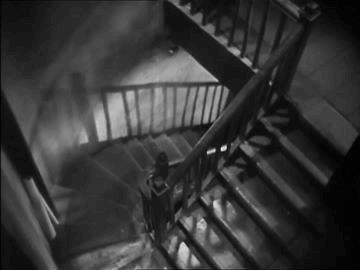
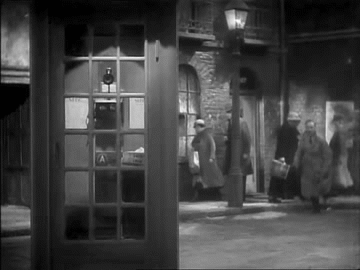


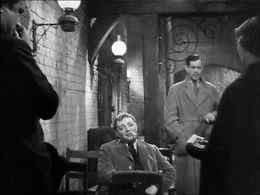




Suspense.
#gif#the man who knew too much#alfred hitchcock#leslie banks#hugh wakefield#frank vosper#peter lorre#cicely oates#clare greet
14 notes
·
View notes
Photo
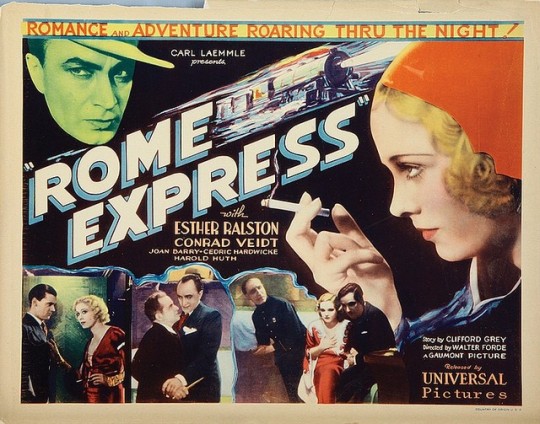
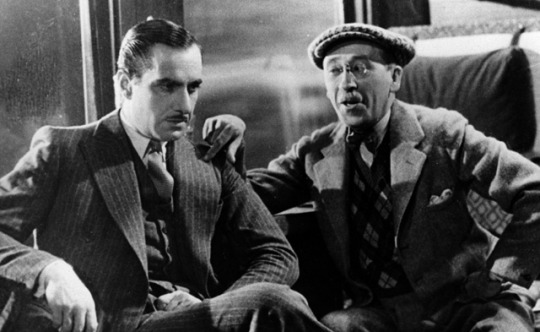

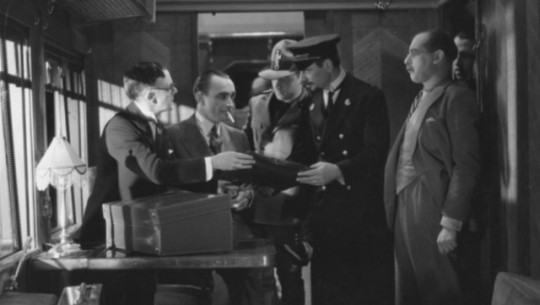
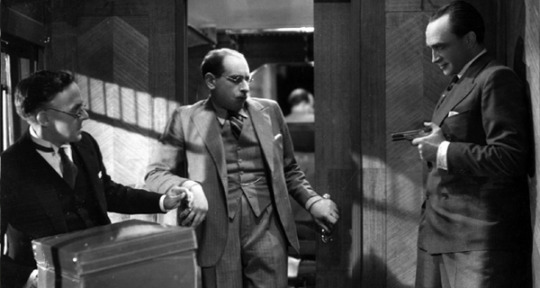

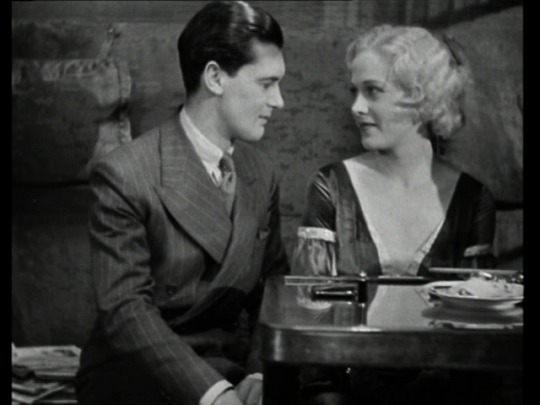
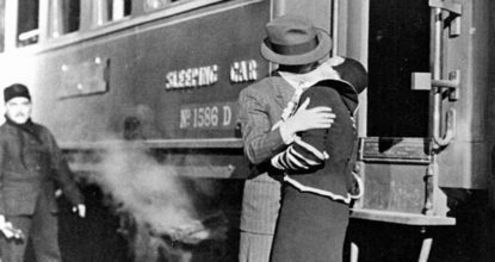
Rome Express (1932)
“Discretion is the better part of Wagons-Lits.”
#rome express#conrad veidt#cedrick hardwicke#esther ralston#finlay currie#harold huth#joan barry#donald calthrop#frank vosper#hugh williams#walter forde#sidney gilliat#films i done watched#british cinema#crime film#1932#train mystery#i love films set on trains#so this is clearly an influence on the lady vanishes#the finest train mystery#a charming film#veidt is his sinister best#but with nice touches of humour#he sounds like a good guy#i've been reading up on him
17 notes
·
View notes
Video
A scene from Jew Süss (1934). Süss (Conrad Veidt) discovers his daughter (Pamela Mason) has just committed suicide because his despicable boss, the Duke (Frank Vosper) tried to rape her, and she had no way out except to plunge off a tower. Cedric Hardwicke co-stars as Süss’s rabbi.
Connie’s acting is not only harrowing but terrifying.
Bear in mind this had serious reality subtext for him as well: his own daughter, Viola, the person he loved more than anyone in the world, was still stuck in Nazi Germany at the time (he himself had just fled to Britain with his Jewish wife, barely escaping with their lives). In another eerie parallel to this, unbeknownst to Connie (Viola never told him this because she knew he would fall apart), the Nazis tried to get Viola to become a part of one of their Aryan breeding programs. They took her in for “interrogations” and even arranged a blond “husband” candidate for her “to clear the Jewish stain off the Veidt family name”. But even if Connie didn’t know, this scene nevertheless represented his very real fear of the worst thing that could happen to him at that point in time.
#conrad veidt#jew suss#video#pamela mason#frank vosper#cedric hardwicke#and the way suss just bends to his fate with the duke makes suss even more unsympathetic#i'm still baffled as to how and why he thought starring in this movie would be pro-jewish#but then again even the fact that he *repeatedly* chose to play jewish characters#while still being *the* biggest german movie star just as hitler had risen to power#was a political choice on his part#so i guess that it was partially because he wanted to play jews as humans but bc he also thought this was a great part#and he gets to play a lot of emotions here--just like in the wandering jew#the phlegmatic sobbing and the terrifying cries and shrieks he makes jfc#his accent's so thick you can't even make out what some of the lines are but that somehow adds to the terrifyingness#you can see why people didn't dare mess with this guy because he was just THIS CRAZY#and you just know this was all proper real veidt crazy and not just him putting it on for a role#because he would always play a very connie version of whatever role he was given#instead of the opposite of typical method acting where the actor disappears inside the character#also the duke needs to be fucking gang raped and set on fire himself jfc die die die#it's really uncomfortable to watch this thanks to all this crapey crap but connie's acting is worth it#it's just not the sort of movie one enjoys rewatching... everyone in this is just such a jerk
6 notes
·
View notes
Text
THEATRE REVIEW: Love From A Stranger
THEATRE REVIEW: Love From A Stranger @captheatres @lovefromuktour
The tone of Frank Vosper’s entertaining reworking of Agatha Christie’s stage adaptation of her short story Philomel Cottage is established in the sprightly opening exchange between Louise Garrard (Nicola Sanderson hamming it up in glorious Hyacinth Bucket style) and her niece’s friend Mavis Wilson (a solid Alice Haig) when the former accidentally breaks an ornate candlestick but covers up her…
View On WordPress
#Agatha Christie#Alice Haig#Frank Vosper#Justin Avoth#Love from UK Tour#Nicola Sanderson#Sam Frenchum
0 notes
Text
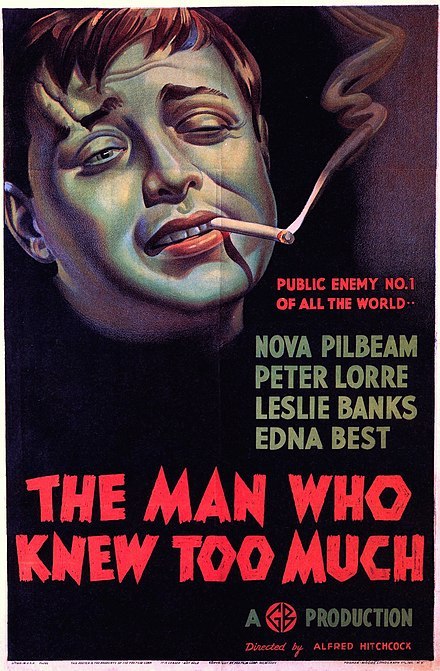

* OUTSTANDING CLASSIC CINEMA #60: "THE MAN WHO KNEW TOO MUCH" ©1934 Charles Bennett and D.B. Wyndham-Lewis (Spy / Action Genre - Starring: Leslie Banks, Edna Best, Peter Lorre, Nova Pilbeam, and Frank Vosper), Produced by Alfred Hitchcock & Michael Balcon https://www.kellygrant.ca/OutstandingClassicCinema.ubr
1 note
·
View note
Text
THE MAN WHO KNEW TOO MUCH (1934 & 1956 - Hitchcock) Decoded!
THE MAN WHO KNEW TOO MUCH
Director: Alfred Hitchcock
Mistaken identities! World travelers! Mystery in the middle east! Secrets told, murder plots, kidnappings, and more – all in THE MAN WHO KNEW TOO MUCH!
Decoding both the 1934 and the1956 versions of this Hitchcock classic spy movie! With special guest, Bill Koenig of The Spy Command!
Main Casts:
1956
Jimmy Stewart: Dr, Benjamin McKenna
Doris Day: Jo Conway McKenna
Christopher Olson: Hank McKenna
Reggie Nadler – the assassin
1934:
Leslie Banks as Bob Lawrence
Edna Best as Jill Lawrence
Nova Pilbeam as Betty Lawrence
Frank Vosper as Ramon Levine (The assassin/sharpshooter)
Ideas? [email protected]
Website Podcast Page:
https://spymovienavigator.com/podcast/the-man-who-knew-too-much/
Check out this episode as we are Cracking the Code of Spy Movies!
#James Bond#Mission Impossible#Bourne#spy movies#classic spy movies#espionage movies#secret agent movies
0 notes
Photo
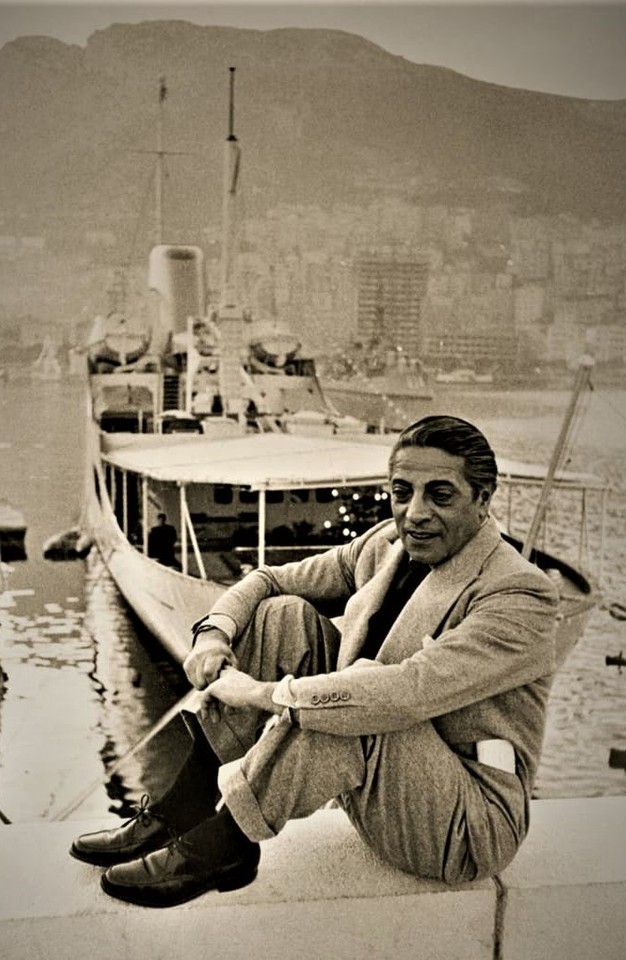
Rebirth Of A Legend
While the 1950s and 1960s produced many remarkable personalities, few public figures had the charisma and audacity of the late Aristotle Onassis, the Greek shipping magnate who converted a warship into the yacht Christina, one of the most glamourous private yachts ever built. Inseparable from his ocean-going palace, Onassis lived aboard for decades, reveling in a life of partying and pleasure that by turns made him hated, envied and admired while attracting the global celebrity set of the era to his jewel of the seas, now reborn as Christina O.
This is one yacht that cannot be fully appreciated without knowing a little about her larger-than-life owner, a man who created the boat as an extension of himself and his professional and personal ambitions. Ari Onassis was not the first yachtsman to understand that by pampering influential guests he could open doors that might otherwise remain closed. And life aboard Christina was an endless round of lavish self-indulgence. Ex-King Farouk of Egypt, a frequent visitor and a man whose appetite for the good life would eventually drive him into exile, referred to the yacht as “the height of opulence.” The actor Richard Burton said, “I do not believe that any man or woman in the world would resist the temptation and the pure narcissism shamelessly flaunted on this boat.”
Onassis was immensely proud of Christina and insisted on escorting his guests on guided tours from stem to stern and deck to dazzling deck. All the bathrooms were in marble, the fittings in gold. There was a fireplace encrusted with lapis lazuli at a cost of a dollar per square centimeter. The dining room included frescoes by Marcel Vertes representing the family throughout the seasons: Tina, Onassis’ first wife, skating, and Alexander and Christina picnicking in the grass.
Other artwork had less exalted origins, the two El Grecos, for instance. Onassis knew these were fakes, but as he once said, “If people want to believe they are authentic, why spoil their pleasure.”
The décor in the nine guest suites was inspired by the Greek islands after which they were named. Onassis’ children, Alexander and Christina, used to occupy the Chios suite and the Ithaca suite respectively, although Christina would give up her place when Greta Garbo, Maria Callas or Jackie Kennedy came aboard.
There were also the Santorini, Mykonos, Lesbos, Andros, Crete, Rhodes and Corfu suites. All contained wood and stone work that had been brought in from the Greek islands, the beauty of the materials chosen to enhance the guests’ pleasure.
The most beautiful suite was that of Onassis himself. Located on the pilothouse deck, where it remains today, it consisted of three rooms: the stateroom, an office containing a Louis XV desk, and an ostentatious bathroom. In addition to gold fittings, the bathtub in blue Syene marble was surrounded by a mosaic depicting fish scenes in the style of the lost palace of King Minos of Knossos.
His taste might, in our politically correct world, be regarded as intolerably crude, perhaps, but he was a man of his times, fabulously wealthy, unapologetic and unashamed of his virility. In Ari’s Bar on the main deck the stool seats were covered with the tanned foreskins of whales. The footrests were whales’ teeth and the ivory armrests were engraved with scenes from the Iliad and the Odyssey, Onassis’ favorite epics.
During one cruise, the famously aloof Greta Garbo was seated at one of the stools in Ari’s bar when her host entered and said, “Madam, do you realise you’re sitting on the biggest penis in the world?”
With two chefs, one French and one Greek, Christina’s galley offered the finest dishes and rarest wines, with Onassis fussing over the smallest details on the menu. Among the crew there were two hairdressers, a butler and a Swedish masseuse. There was an elevator, an operating theater with radiography equipment, a telex and a network of 42 telephone lines.
Whether it was in the harbor at Monte Carlo or cruising off Venice or in the Caribbean, Onassis sailed with the stars. The parade on Christina’s guest list included Marilyn Monroe, Liz Taylor and Richard Burton, Frank Sinatra, Liza Minelli and Rudolf Nureyev. Among the heads of state, industrialists and high ranking statesmen: John Kennedy and Sir Winston Churchill. Rockefellers, Rothschilds, Paul Getty, Prince Rainier and Princess Grace—all were there at one time or another. Britain’s wartime Prime Minister was such a revered guest that Onassis gave up his own suite whenever Churchill visited, an honor never conferred on anyone else. And Churchill, who was aboard for eight cruises between 1958 and 1965, must have enjoyed the company of his host, who could in turn be a public entertainer, a political or a cultural critic, all with surpassing intelligence, charm and insight.
Christina was also the stage for Ari’s endless amorous adventures, and in that respect the summer cruise of 1959 was a blend of high drama and bedroom farce, because this was when Onassis finally won over Maria Callas after she came aboard with her husband. In the course of a few days, the other guests witnessed the break up of two couples and the start of one of the more sensational love affairs of the era. Its notoriety was eclipsed only by his subsequent marriage to former First Lady Jacqueline Kennedy.
Christina started life as a Canadian Navy River Class Frigate, HMCS Stormont, built in 1943 by Vickers of Montreal. After distinguishing herself in the Normandy landings, she became a surplus relic. Onassis bought her in 1952 as part of a block purchase of ten ships from a Baltimore scrap merchant, John Shapiro. His plan was to build a fleet of whalers in collaboration with the Greek government, and when this enterprise fizzled Onassis kept the Stormont for himself. Shapiro said later, “I sold her to him for the scrap value.”
Onassis had showed his sharp nose for business, paying $50,000 (some put the figure at $34,000) for a ship of 1,724 tons, propelled by steam engines developing 6,500 hp that gave her a top speed of 21 knots. There is no record of what happened to her four 20 mm Oerlikon machine guns, various cannons and 145 depth charges. What mattered to her new owner was that at 327’ LOA and 36’6” beam she could be converted into something quite exceptional. Onassis chose the Howaldt Werke shipyard in Germany for the conversion, pouring in a total of four million dollars; and he paid great attention to the work, intervening personally on many occasions during a project that lasted a year and a half.
He commissioned a German professor of architecture, Caesar Pinnau, who created harmonious, classic lines, characterized by a very high stern. All did not go smoothly with the work, however, as there were many complicated challenges to overcome. The stem, for example, had to be rebuilt in one piece and welded to the existing skeleton. But it was above all Onassis’ demands that posed seemingly insoluble problems.
He wanted Christina to carry a fleet of tenders, a normal requirement aboard large modern yachts today but unheard of in postwar Europe in the early 1950s—as indeed were large private yachts themselves. In addition to two lifeboats, Christina was to house five fast launches, a glass bottomed boat for underwater observations, a small dinghy, two kayaks, a Fiat 500, and a five-seater seaplane, the famous Piaggio. This armada meant that the engineers had to resolve many stability calculations. Part of that problem was settled when Christina became one of the first yachts fitted with Vosper stabilizers.
For the comfort of the passengers there was an electronic climate control system that also regulated the temperature of the swimming pool; the pool could be transformed into a dance floor, and this raised the question of providing enough electricity to the ship’s systems. Demand was so great that Christina’s four generators had to run almost continuously and so required special soundproofing.
Onassis took delivery of his jewel in October, 1954. By then, Christina had little in common with Stormont. Her hull had been lengthened by 29’ and only her engines and forecastle had survived the extensive conversion.
As fabulous as the life of the Christina was, her decline was just as spectacular. After Onassis died in 1975 the boat became the property of his daughter, Christina. Jackie Kennedy Onassis owned 12.5 percent, the same share she had in the private island of Skorpios, but she abandoned her rights after bitter negotiations in which Christina Onassis tried to compel Ari’s widow to renounce all claims to the inheritance. The dispute was settled for $26 million. Christina kept the yacht that bore her name and continued to maintain it as her father had, and in 1978 she made a gift of the boat to the Greek government. An unfortunate move, as it turned out, because after using her for state functions in the early days, the government abandoned her and the looters took over. Among the greatest losses was the famous Syene marble bathtub.
Christina continued to rot until 1991 when one Alexander Blastos came into the picture and said he wanted to buy the boat and bring her back to life. Blastos was a self-described financial genius; he had the paperwork to prove it, and his offer of $2.2 million at public auction was immediately accepted. Sadly, his deposit check for $220,000 bounced. Investigation showed that Blastos had over-stated his credentials. He was actually a waiter from Keene, New Hampshire, and it was in New Hampshire that he was eventually charged with fraud. At his trial the court learned that between 1991 and 1995, in addition to swindling various people out of money and airline tickets, he had also commissioned a complete and reportedly superb redesign of Christina from the Luigi Sturchio studio. That project went nowhere. Ex-waiter Blastos got five years and was fined $250,000.
Serious buyers appeared, among them Peter Tauck, whose company bought the yacht in 1998, only to sell her again to John Paul Papanicolaou, a ship owner and friend of the Onassis family. With a group of investors, Papanicolaou and Tauck organized a refit with the intention of offering the yacht for charter, either for a private party or by the cabin, as on a cruise ship. From the outset, their avowed objective was to restore Christina to her former glory.
Considerable design work was required beforehand, and this was undertaken by the Greek naval architect Costas Carabelas. The refit contract went to Viktor Lenac, a Croatian shipyard, and work began in January, 1999 with the removal and storage of interior fittings. At the Lenac yard one of the first tasks was to clean the hull with high-pressure water jets, the force of which opened up two enormous cavities in the steel.
When ultrasonic measurements were made to test the rest of the plating it was found that 65 per cent of the hull needed replacing, not the 20 per cent originally predicted, which meant that instead of drydocking the boat for 60 days, as anticipated, she spent 345 days in it.
Christina O was delivered to her new owners last July 24 after 16 months of intensive work requiring a total of 1.2 million man hours and an estimated cost of $50 million. In all, 560 tons of new steel had to be added. It is now half an inch thick (12 mm), in compliance with the exacting SOLAS (Safety of Life at Sea) regulations governing a charter yacht.
The SOLAS standards highlighted other major problems. The sun deck or compass deck where the Galaxy Bar occupied an area of about 1,600 square feet, could not, for stability reasons, be decked in teak. This extra weight of several tons 33’ above the keel would indeed upset the stability of the boat which, incidentally, is now fitted with two sets of Vosper stabilizer fins.
Because the vessel is very low on the water, most of the lower deck portholes were eliminated, leaving only those installed in staterooms at the aft end of the ship. The fire control system was redesigned and prop shafts aligned, a vastly complicated operation because of their length. Cold rooms, an incineration chamber and garbage compactor were installed to serve the new, professional galley on the lower deck.
The three original steam engines extended through three decks, occupying a huge volume amidships. Their replacement by two MAN diesels of 2,775 hp each has greatly increased space in this area. The MANs are placed farther aft, rendering the funnel duct redundant.
Additional space has also been gained on the main deck, which now has a 1,000 sq. ft. dining room. This is flanked on each side by relaxation areas with sofas, a gaming table and a piano. On this same mid- or promenade deck, there is a new gym and a lounge decorated in the style of an English clubroom.
The staterooms on the main deck have hardly changed, but in order to house more passengers a new accommodation area has been created at the aft end of the lower deck in the crew’s former quarters. Now there are eight guest staterooms, which increases the guest capacity to 36 people, without counting the famous Onassis suite. This remains one of the most beautiful apartments on the boat, with the main changes in the furnishing of the bathroom, which has an immense shower stall and a marble bathtub.The funnel has been retained, along with its trademark yellow color, but it is now a dummy, housing an air conditioning system and a back-up generator set, again complying with SOLAS standards. The new engine exhaust has been created in the form of an aft mast and takes up a lot less room than that of the old system. Similarly, the arrangement for stowing the ship’s tenders has opened up extra space. There are less of them and they are smaller than in Onassis’ time, but positioning them around the funnel and on the foredeck has created new exterior layout possibilities.
Among some of the elements preserved from the Onassis era are the wall lights, the leather settees in his suite, and the onyx and silver handrail of the monumental stairway. Ari’s Bar has been preserved largely intact, though the famous stools have been recovered with leather but retain their whale teeth footrests. The Atlas on the wall, which incidentally was in a very good state of preservation, has also been kept. The Lapis Lounge abaft the bar retains much of its former ambiance even if, for safety reasons, the fireplace decorated with lapis lazuli is no longer functional—and works by Renoir, Le Corbusier and Chirico can now be found here. The fake Grecos are gone.
For the rest, the classical decoration reflects Mediterranean inspiration with light-colored tones strengthening an abundant luminosity. The best fabrics from Mulberry and JR Scott have been used, with elegant furniture by Giorgetti.
In short she has regained much of what she had before, class and beauty, two of her late owner’s most cherished ideals.
In her time the old Christina became the epitome of opulence, a shrine for celebrity worship and a dockside paradise for tabloid paparazzi. Above all she may be remembered as an object of desire created by the forceful personality of the man who married Jacqueline Kennedy.
Daily inspiration. Discover more photos at http://justforbooks.tumblr.com
10 notes
·
View notes
Photo


CALIFICACIÓN PERSONAL: 7 / 10
Título Original: The Man Who Knew Too Much
Año: 1934
Duración: 84 min
País: Reino Unido
Director: Alfred Hitchcock
Guion: Charles Bennett, D.B. Wyndham-Lewis, A.R. Rawlinson, Edwin Greenwood
Música: Arthur Benjamin
Fotografía: Curt Courant (B&W)
Reparto: Leslie Banks, Peter Lorre, Edna Best, Frank Vosper, Hugh Wakefield, Nova Pilbeam, Pierre Fresnay
Productora: Gaumont British
Género: Crime, Mystery, Thriller
https://www.imdb.com/title/tt0025452/
TRAILER: https://www.youtube.com/watch?v=p_QUG9eFCIg
0 notes